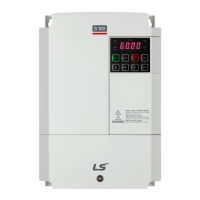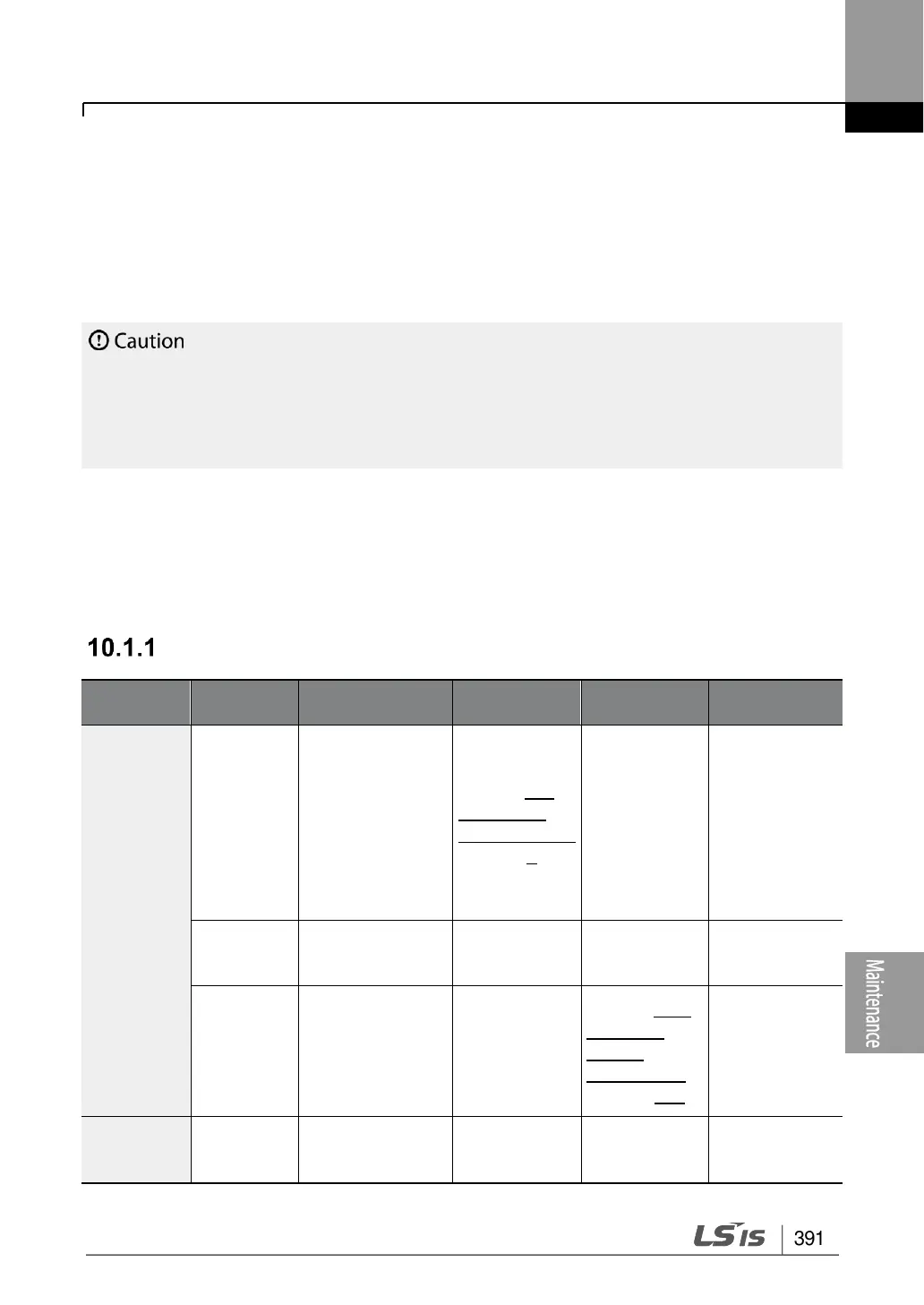10 Maintenance
This chapter explains how to replace the cooling fan, the regular inspections to complete,
and how to store and dispose of the product. An inverter is vulnerable to environmental
conditions and faults also occur due to component wear and tear. To prevent breakdowns,
please follow the maintenance recommendations in this section.
• Before you inspect the product, read all safety instructions contained in this manual.
• Before you clean the product, ensure that the power is off.
• Clean the inverter with a dry cloth. Cleaning with wet cloths, water, solvents, or
detergents may result in electric shock or damage to the product.
10.1 Regular Inspection Lists
Daily Inspections
Is the ambient
temperature and
humidity within
the design range,
and is there any
dust or foreign
objects present?
Refer to 1.3
Installation
Considerations
No icing
(ambient
temperature: -
10 - +40) and
no
condensation
(ambient
humidity below
50%)
Is there any
abnormal
vibration or noise?
Are the input and
output voltages
normal?
Measure
voltages
between R/ S/
T-phases in.
the inverter
terminal block.
Refer to 11.1
Input and
Output
Specification
on page 397.
Digital
multimeter
tester
Is there any
leakage from the
inside?

